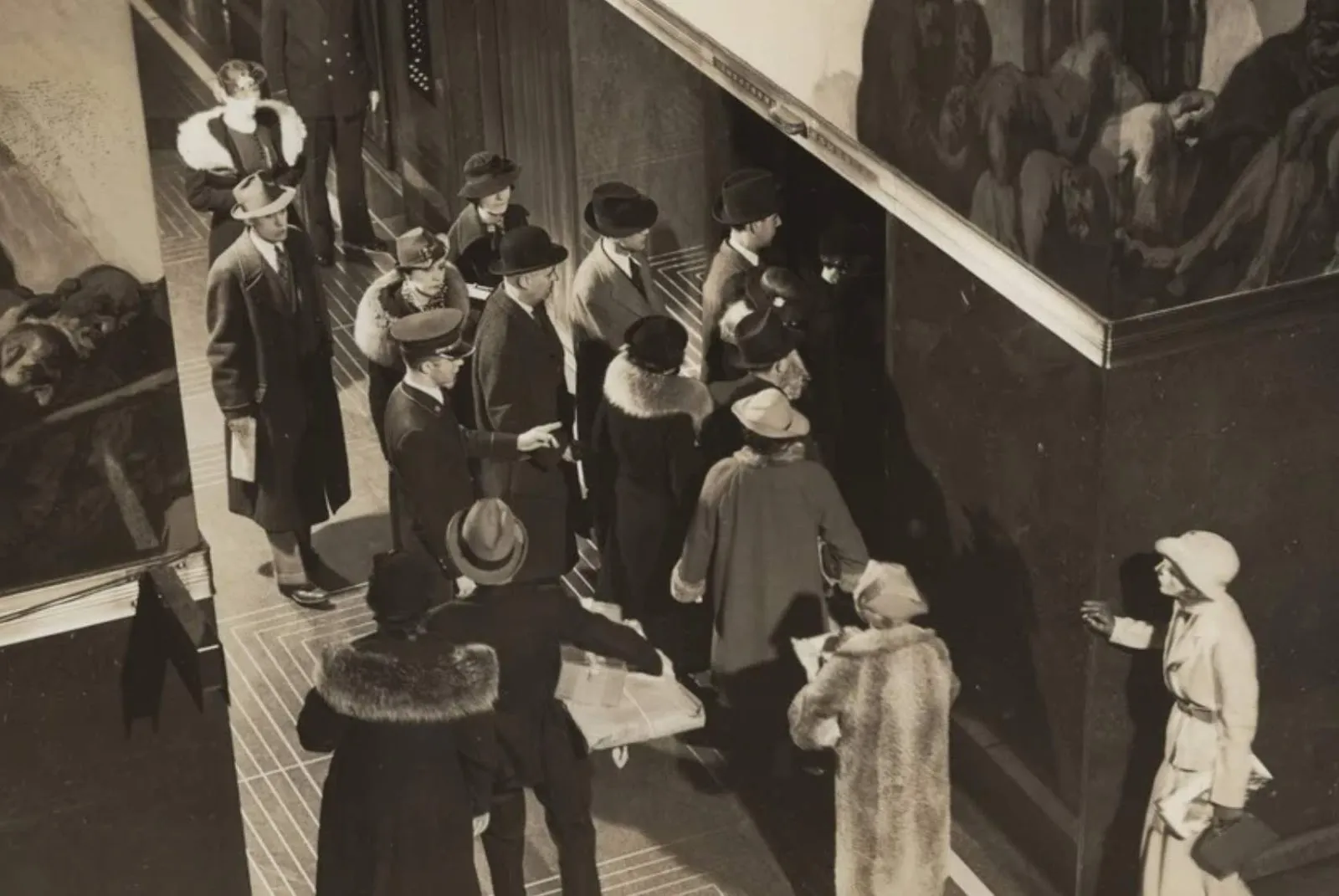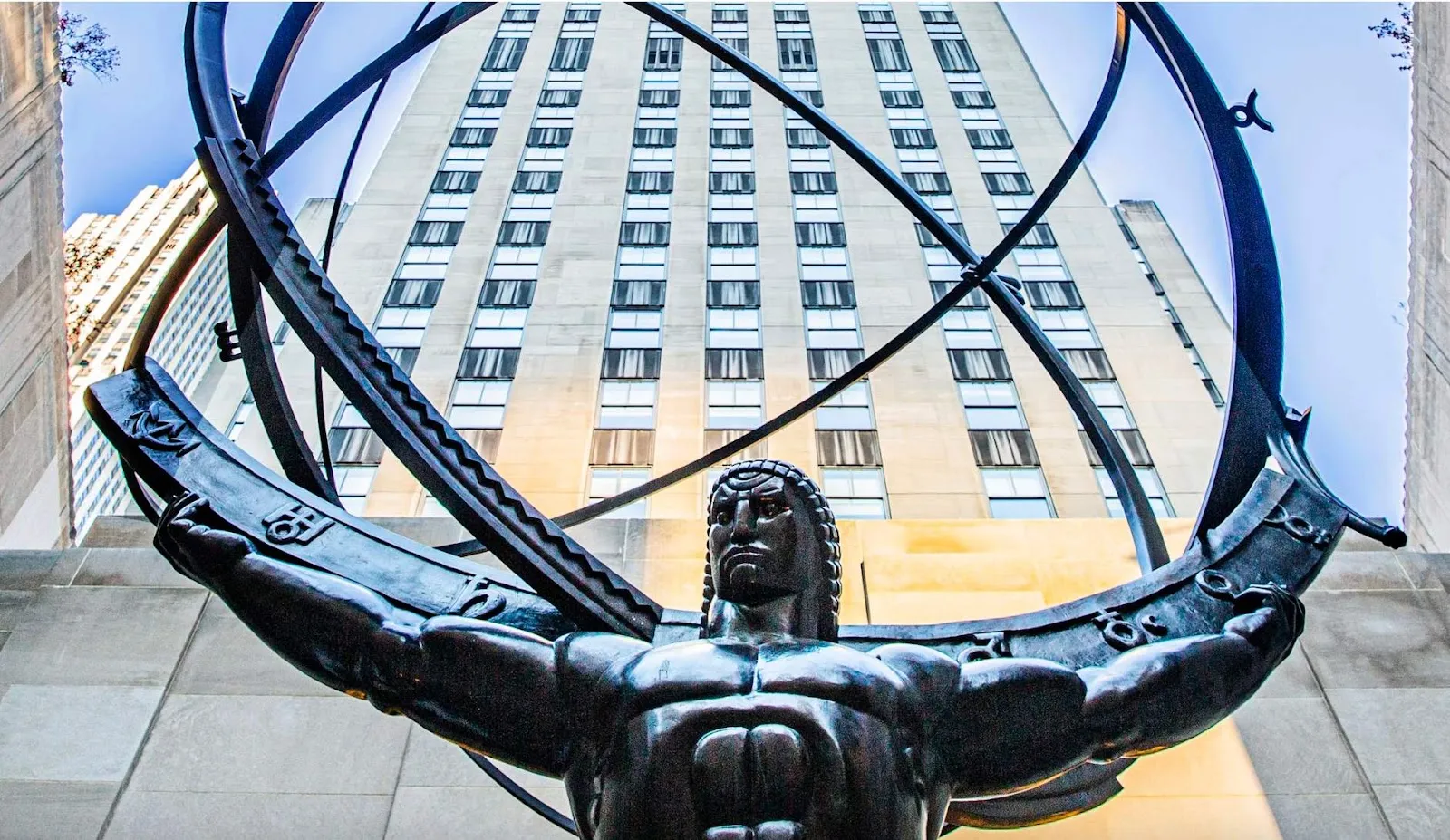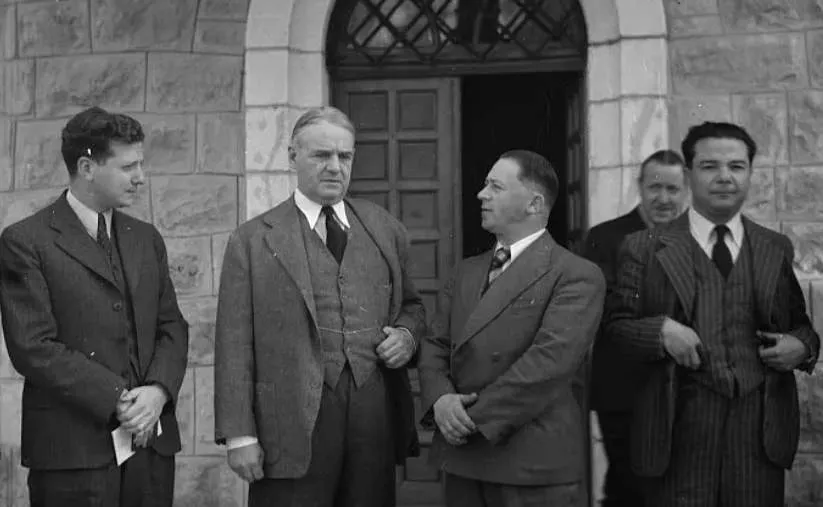Five Spy Secrets Hidden Behind Rockefeller Center’s Closed Doors
Famed for its shimmering tree, ice-skating rink, and tall towers, Rockefeller Center hides a spooky history beneath its public glamor. The first of its 19 commercial buildings opened in 1933 and the center now sprawls across 22 acres in central Manhattan but during WWII Rockefeller Center was a veritable spy factory.
The FBI operated inside 30 Rock as the ‘Importers and Exporters Service Company’ providing ‘backstopping’ for spies. Room 3603 was a WWII intelligence hub, and soon-to-be CIA chief Allen Dulles led operations one floor above Britain's MI6. So is it any surprise Moscow came snooping around?
Here are five secrets you may not know about New York City’s iconic towers.

The FBI’s ‘Importers and Exporters Service Company’
With the world at war in August 1940, the FBI secretly moved into Room 4332 of 30 Rockefeller Center (the RCA Building), its first attempt to operate a long-term cover company for the Special Intelligence Service, the US’s first civilian foreign intelligence service set up to counter Hitler’s spies. Room 4332 proactively gathered intelligence about espionage, counterespionage, subversion, and sabotage links to South America, Central America, and the Caribbean. It would be a steep learning curve for the G-Men who were more comfortable dealing with gangs and guns than spies.
Why Rockefeller Center? “It likely had something to do with the support that Nelson Rockefeller had provided to President Roosevelt’s intelligence work,” the FBI said. “Furthermore, on multiple occasions after the SIS’s creation, our personnel were afforded cover by Nelson Rockefeller’s Office of the Coordinator of Inter-American Affairs, which countered Italian and German propaganda in the region”.
By 1946, the FBI had identified 887 Axis spies, 281 propaganda agents, and 222 agents smuggling strategic war materials in addition to radios and saboteurs.

British Security Coordination
Rockefeller Center also hosted British Security Coordination spies who skulked around under the guise of the British Passport Control Office. In addition to looking after British interests, BSC was deep into news manipulation, black propaganda, and discrediting pro-Nazi or isolationist groups like 'America First.' Roald Dahl - later an author of children’s books including Willy Wonka - was one of 2,000 BSC spies. Many of its operatives were embedded in US newspapers, radio stations, and polling organizations.
Canadian-Scottish spymaster William ‘Intrepid’ Stephenson - a WWI fighter pilot and a friend of 007 creator Ian Fleming - led the BSC from the 35th and 36th floors of Rockefeller Center where his team supplied intel on German rearmament. The BSC also used the Overseas News Agency to disseminate fake news stories to drum up US support for the war and created a network that included its own radio station.
"The brand new social experience where you activate your gaming skills as you train like a spy."
- TimeOut
Take on thrilling, high-energy espionage challenges across different game zones.


British Intelligence Service, MI6
When former US Ambassador Joseph P. Kennedy returned to America from his posting in Britain, MI6 spies embedded in Rockefeller Center were watching him closely with Winston Churchill's approval, according to Britain’s National Archives.
“More evidence of regrettable activities on the part of Mr. Kennedy, which should be added to our dossier on the subject,” said a January 1941 memo summarizing the former ambassador’s recent trip to Hollywood. Britain was concerned that Kennedy, an outspoken opponent of US entry into WWII, could sway US public opinion and they deployed spies including British actor Douglas Fairbanks to keep an eye on Kennedy Sr. during his California trip.
Stephenson, overseeing BSC, had a close relationship with the Americans and MI6. The British spy agency recruited the WWI flying ace after he’d become a millionaire developing and selling radios in Britain. It led to an excellent working relationship between the British and their US counterparts including the FBI’s J. Edgar Hoover and a new civilian US spy agency that was about to move into the center.

Civilian spies
Before WWII, US intelligence was mainly in the hands of the Department of State, Office of Naval Intelligence, and the War Department's Military Intelligence Division (MID). In 1941, President Roosevelt appointed William ‘Wild Bill’ Donovan to head a new civilian office, the Coordinator of Information (COI), to collate and analyze intel.
Future CIA director and well-connected lawyer Allen Dulles - who’d kept a close eye on the Rockefeller family oil interests in Turkey after WWI - was appointed to run the OCI’s NYC office. Dulles took up shop in Room 3603 - the same quarters as Stephenson’s BSC - and they shared strategic intel. After Pearl Harbor, the COI became the Office of Strategic Services (OSS) overseeing covert operations in Europe, Asia, and North Africa, and Dulles moved to Switzerland. When the CIA was formed in 1947, Dulles was named as its first civilian director.

Wartime tenants
William Stephenson’s clandestine BSC operation was parked just three floors below the Japanese consulate - but not for long. Rockefeller Center’s ‘International Building’ was a hub for 19 consulates in 1941 but the US entry into WWII made for uncomfortable neighbors. The Italian consul general turned over the keys to his space in Rockefeller Center’s Palazzo d'Italia and sailed home. American oilman William Rhodes Davis - who traded with Germany and Italy before the British blockade - was denied a lease renewal. The US Federal government seized the offices of any remaining German, Italian, and Japanese tenants.
Meanwhile, the royal Italian coat of arms over the entrance to the center’s Palazzo d'Italia was covered with planks, and French bookseller Isaac Moholo turned his Librairie de France into a meeting place for exiled French intellectuals, Daniel Okrent reports in his book Great Fortune.
Following the war, suspicion turned to the Soviets. Where there are American spies, there are often Moscow’s eyes and ears. In 1948, the Soviet Union opened a large exhibit in the heart of Rockefeller Center featuring Russian exports such as vodka, sable furs, linen, and caviar. Alongside the delicacies were war posters and photographs showing Russians fighting against Nazi Germany. The exhibit was an ideal opportunity for the Russian Ambassador and other dignitaries to drop by Rockefeller Center during the month-long March display and for anti-Soviet demonstrators - describing themselves as Lithuanian political refugees - to arrive with placards attacking the "exhibition of lies''.
Rockefeller Center, the majestic ensemble of towers that commanded the heart of midtown Manhattan, was once again the center of the world’s attention.
SPYSCAPE+

Join now to get True Spies episodes early and ad-free every week, plus subscriber-only Debriefs and Q&As to bring you closer to your favorite spies and stories from the show. You’ll also get our exclusive series The Razumov Files and The Great James Bond Car Robbery!


Gadgets & Gifts
Explore a world of secrets together. Navigate through interactive exhibits and missions to discover your spy roles.
Your Spy Skills
We all have valuable spy skills - your mission is to discover yours. See if you have what it takes to be a secret agent, with our authentic spy skills evaluation* developed by a former Head of Training at British Intelligence. It's FREE so share & compare with friends now!
* Find more information about the scientific methods behind the evaluation here.


Stay Connected
Follow us for the latest
TIKTOK
INSTAGRAM
X
FACEBOOK
YOUTUBE